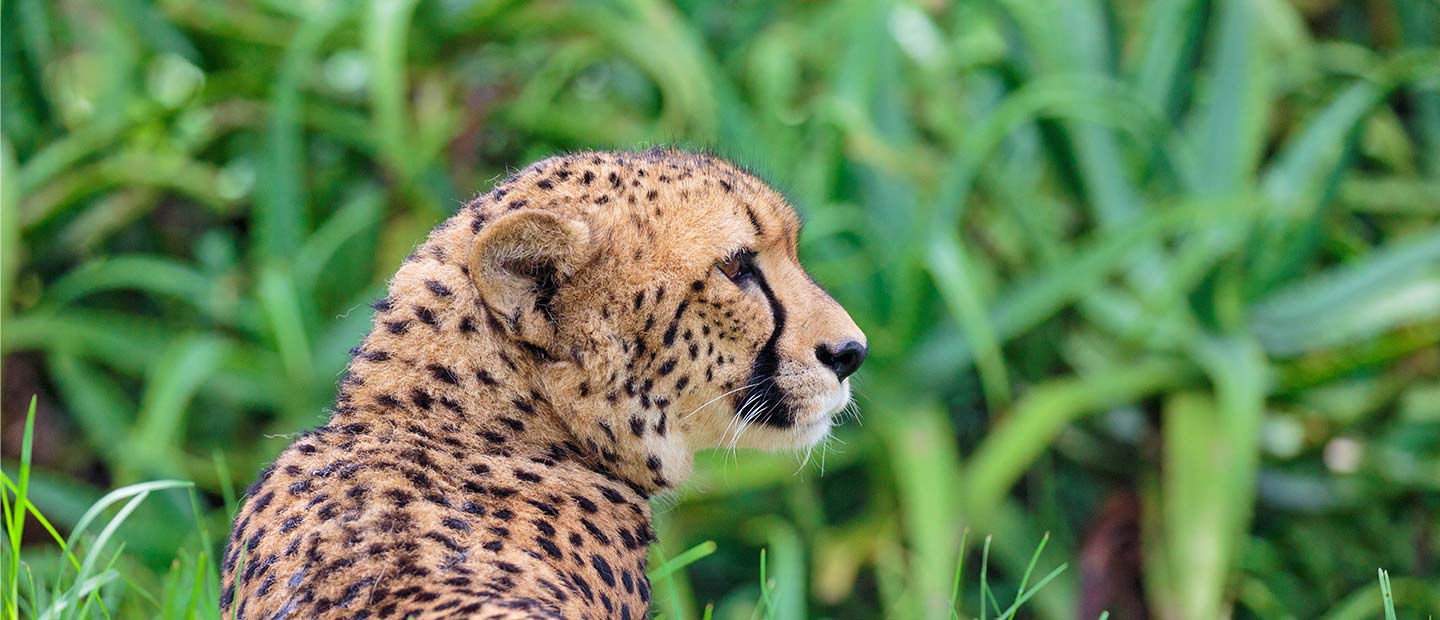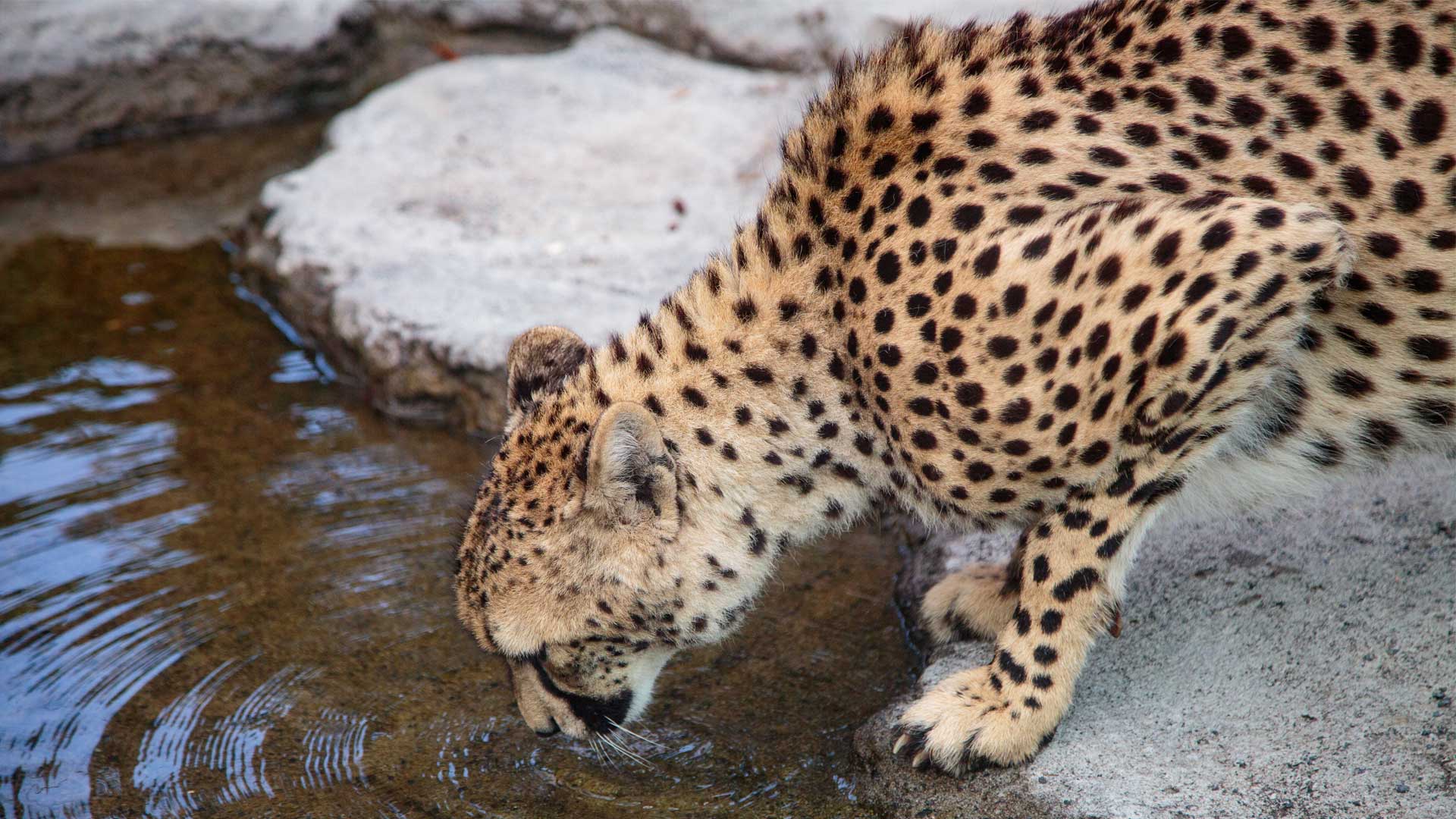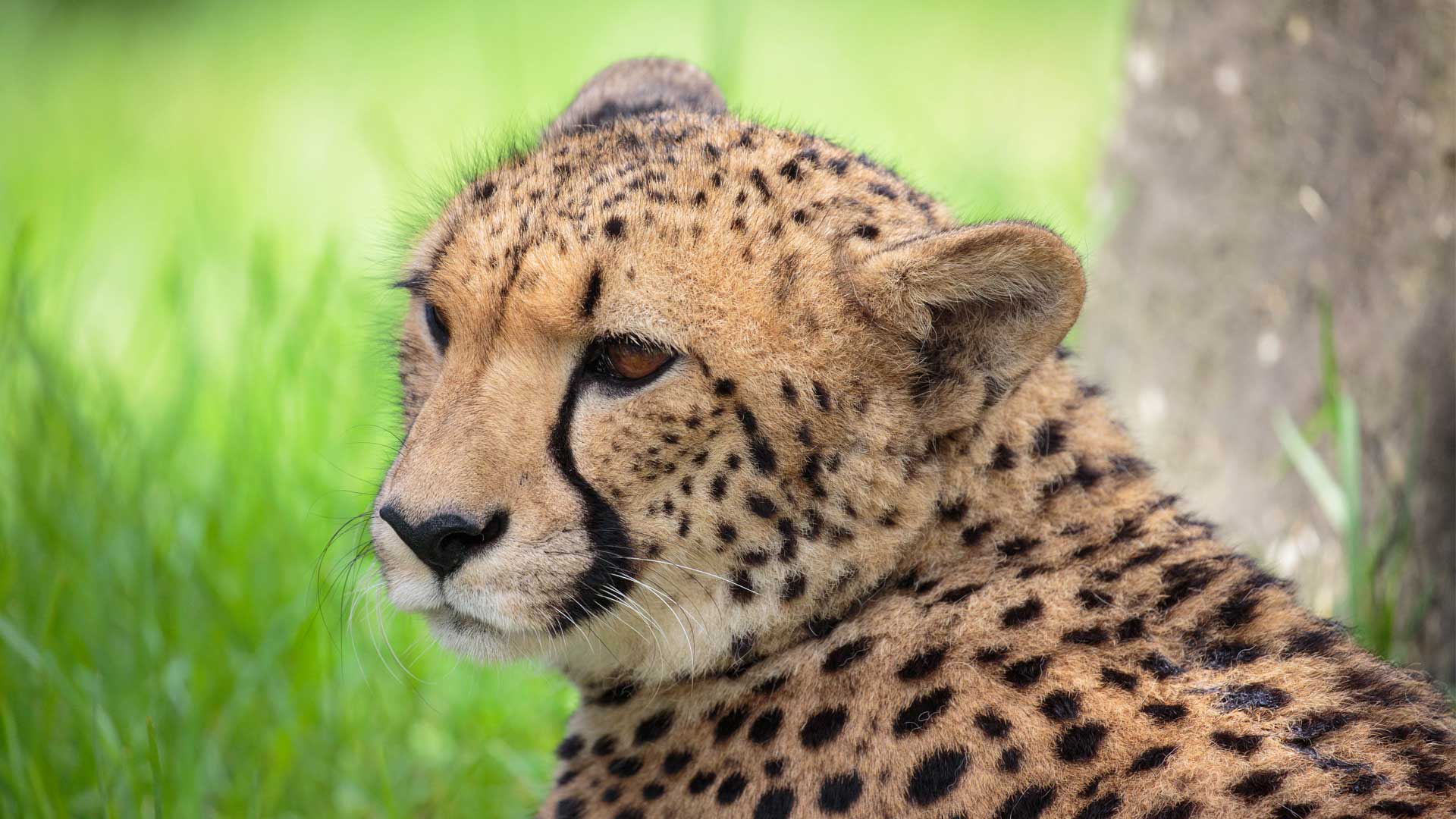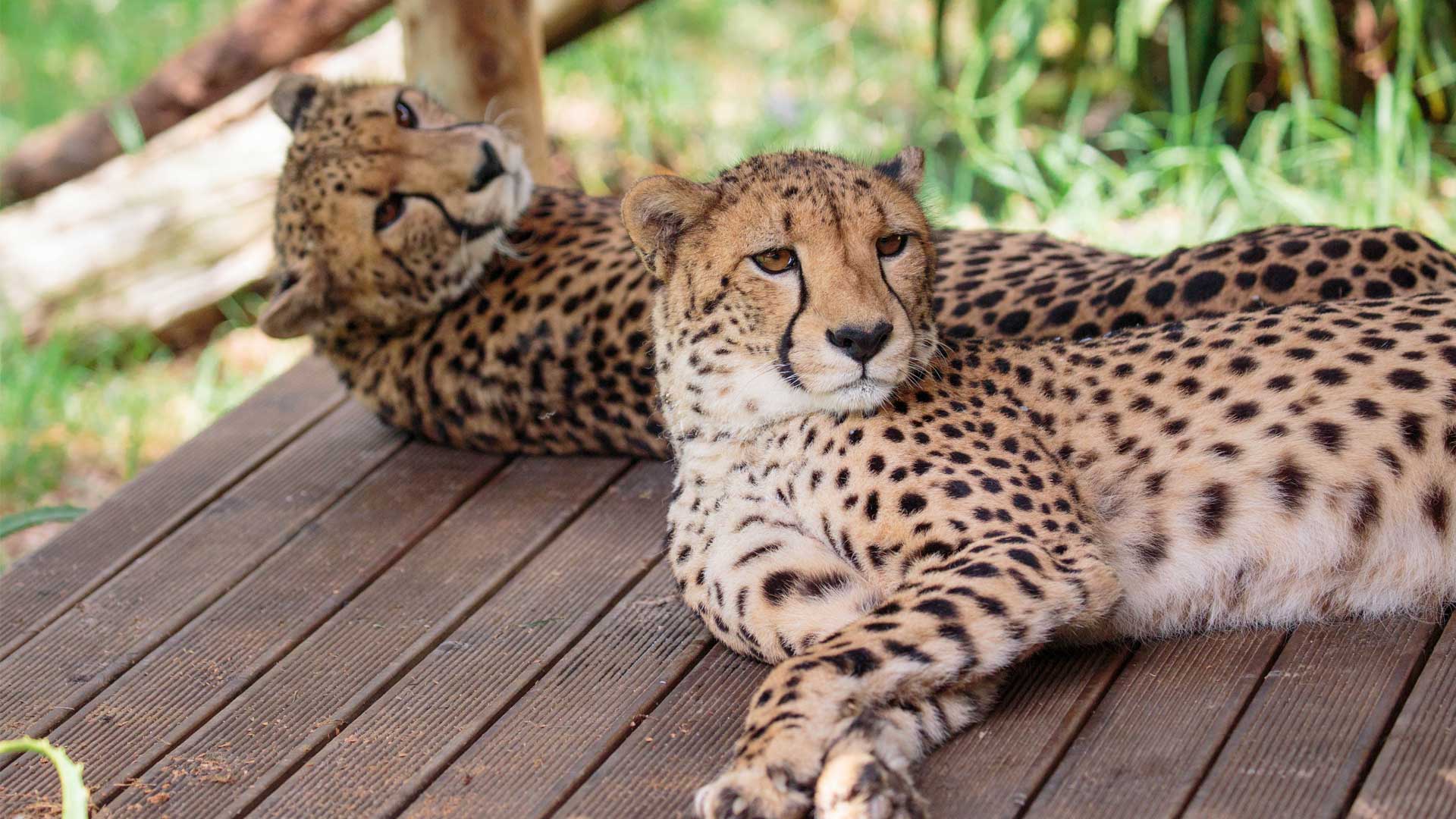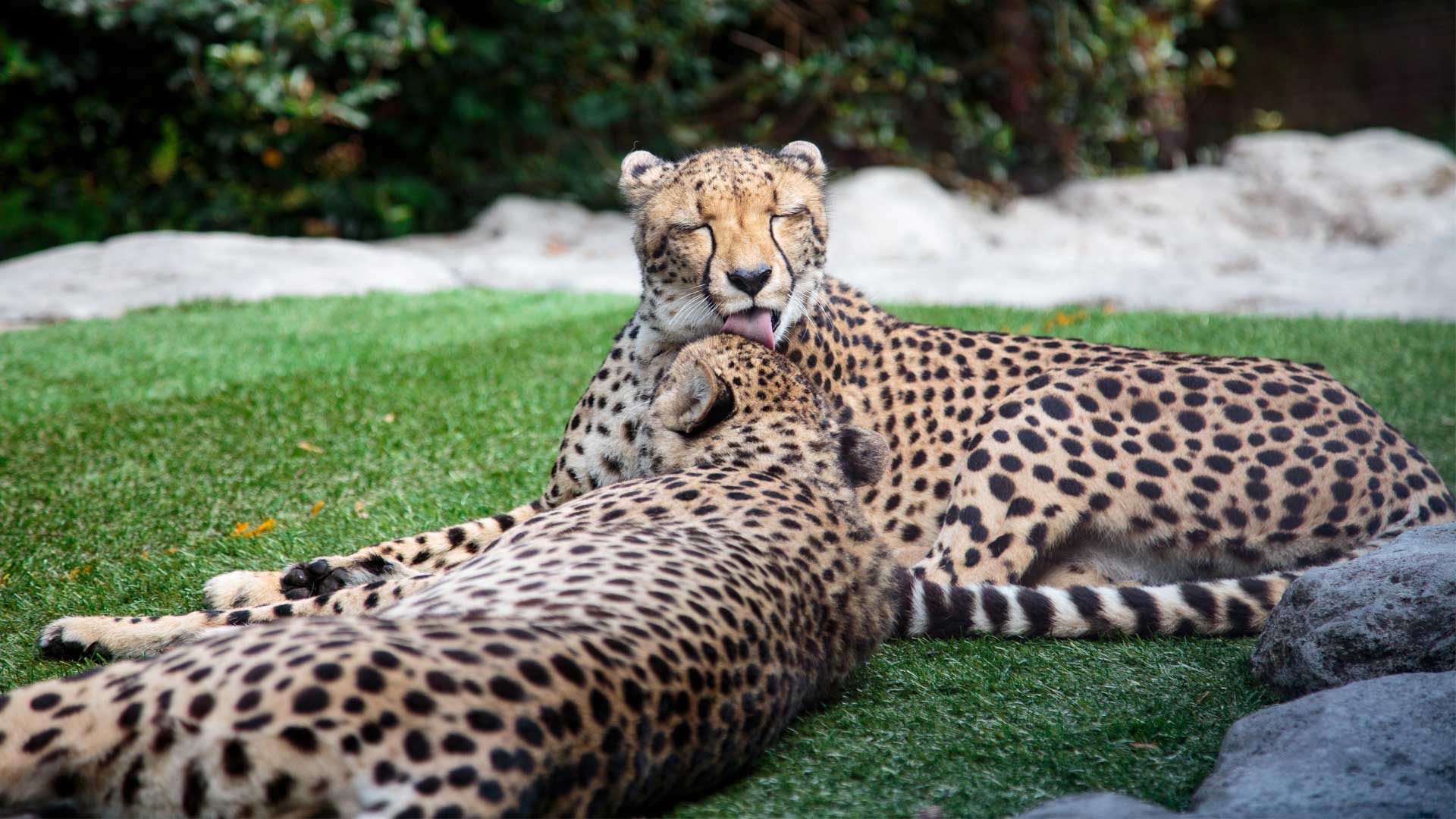In the Wild
Origin: African cheetah (Acinonyx jubatus hecki) are mostly found in isolated parts of Southern and Eastern Africa, with a few smaller populations in Northern and Central Africa. In Asia, the Asiatic cheetah subspecies (Acinonyx jubatus venaticus) is now only found in Iran.
Habitat: Cheetah live in savanna, shrubland, grassland and desert habitat types.
Conservation status: Vulnerable
How we’re helping
Conservation Fund
Since 2004, the Auckland Zoo Conservation Fund has worked with and supported Cheetah Outreach with their mission to promote the survival of the South African cheetah. To reduce human-wildlife conflict between cheetahs and farmers, Cheetah Outreach place livestock-guarding dogs on farms in areas where cheetahs are present. These dogs watch-over livestock and instinctively protect them from a variety of predators, including cheetah. Since this project started, Cheetah Outreach have reported a drop in livestock loss. Cheetah Outreach also has a curriculum-linked education programme which teaches young children about the importance of conservation and species in the area.
Breeding programme
Qia and Quartz are spending time at Auckland Zoo as species ambassadors before they leave to become part of the international cheetah breeding programme. The plan is that both Qia and Quartz will go on to contribute to the genetic diversity of captive cheetah as a safety net for cheetah populations in the wild.
How you can help
A $50 donation to the Auckland Zoo Conservation Fund could train and feed an Anatolian Shepherd dog for one week, reducing human-animal conflict and protecting cheetah in the wild.
Just by visiting the Zoo a portion of your ticket will contribute to conservation projects in Africa that support cheetah in the wild!


